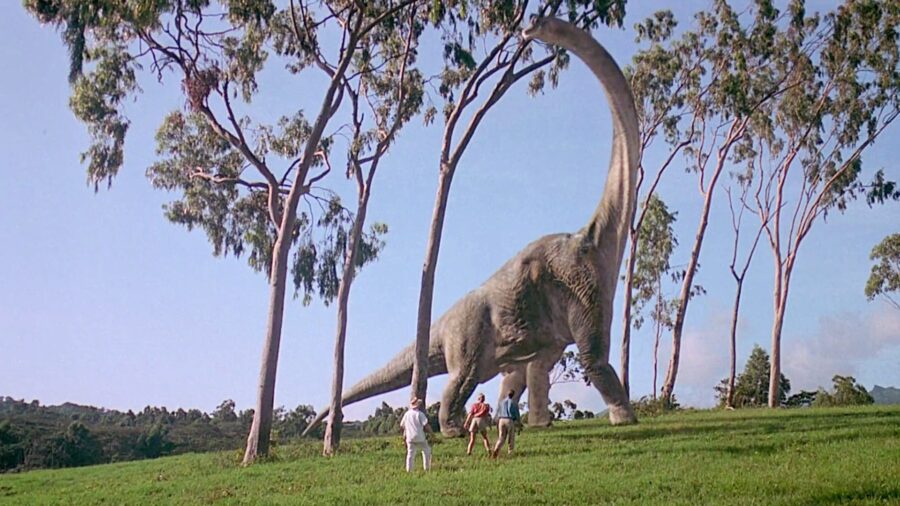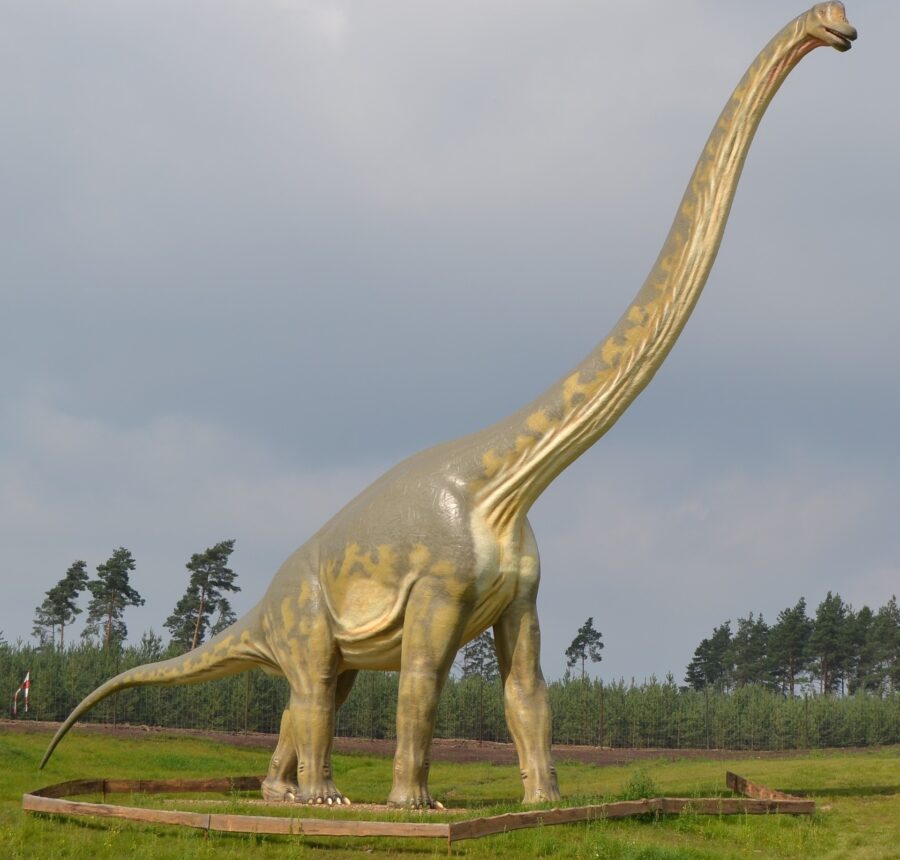The Dinosaur With The Longest Neck In History Has Been Discovered
Scientists have identified a sauropod with a 15 meter long neck.

Jurassic Park fans may be feeling some combination of childlike wonder and unmitigated dread this week, as it has just been announced that a new sauropod has been identified by an international team of paleontologists. According to a write up in SciTechDaily, a team led by Dr. Andrew J. Moore of Stony Brook University has reported a late Jurassic sauropod known as Mamenchisaurus sinocanadorum sported a 15 meter long neck, the largest of its kind. At about 50 feet in length, the dinosaur is certainly giving the giraffe from The Last Of Us a run for its money as the creature with the longest neck in town.
The dinosaur is part of the widely documented sauropod family, which are known to have the longest necks, including the diplodocus, barosaurus, and perhaps most famously, the brachiosaurus, which serves as the first living dinosaur encounter of Dr. Alan Grant (Sam Neill) and company. Relatively complete fossils of these prehistoric creatures have been discovered since the late 1800s, but recent studies expanding the diversity and evolutionary history of the sauropod family have uncovered the true length of the Mamenchisaurus sinocanadorum spine, setting it apart from other members of the genus.
The Jurassic mouthful was known to sport necks more than six times longer than that of an average giraffe, and nearly twice the length of a double-decker bus, leaving Fred Flintstone enough room to get a good night’s rest midway through sliding down the enormous nape. The dinosaurs of the sauropod family had the longest neck in the animal kingdom as a means to collect branches and leaves from the heights of the massive foliage. As herbivores, the incredible density of their body mass prevented predators from attacking them, allowing them to use their massive necks to attack or defend themselves.

This technique is special for a number of reasons, as most animals are prone to sensitivity in the neck, given that it is a highly vulnerable area, causing near-immediate death if injured. Of course, the dinosaurs with the longest necks were given the evolutionary benefit of incredibly tough skin, puzzling scientists for years with the conundrum of how their bodies could support so much weight from the massive muscle groups. That is, until computed tomography technology allowed paleontologists to scan vertebrae fossils, revealing their lightweight and nearly hollow structure.
Despite being the dinosaurs with the longest necks in the game, sauropods had skeletal builds in the neck, similar to how many other creatures have ribs. The Mamenchisaurus sinocanadorum apparently had rod-like neck ribs measuring 4 meters in length, which extended through the vertebra in overlapping bundles, stiffening their necks against danger.
These days, the lingering scientific mystery seems to focus on how it was physically possible for these dinosaurs to pull air down the longest necks into their lungs. Of course, teams such as Dr. Moore’s have worked tirelessly for decades to uncover the truth, with each new discovery contributing to our understanding of the prehistoric period on Earth. It shows that no matter how many millions of years old these creatures are, there are always new scientific discoveries to be made!












